Explore Cenotaph Of Raja Gangadhar Rao Which Is A Timeless Splendour In Jhansi
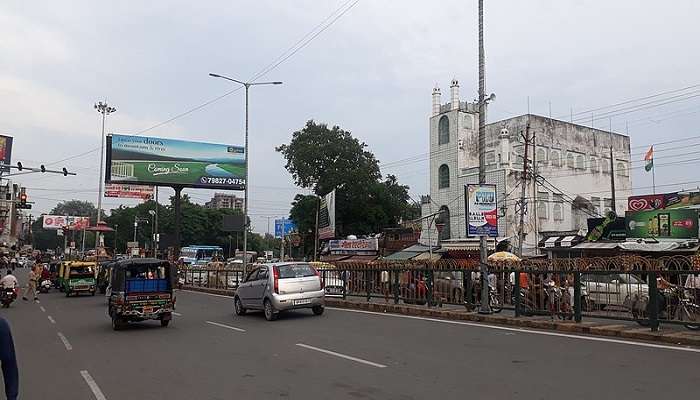
In Jhansi, the Cenotaph of Raja Gangadhar Rao is a magnificent and awe-inspiring structure that represents the legacy of a great leader. The great leader who lived continues to leave behind a powerful and everlasting legacy, as you will see once you get to this incredible monument. It is a wonder of construction, mixing Hindu and Islamic styles to create a one-of-a-kind, beautiful creation. The cenotaph serves as both a remembrance of Raja Gangadhar Rao and a mirror of Jhansi’s culture and art traditions.
About Cenotaph Of Raja Gangadhar Rao

The Cenotaph of Raja Gangadhar Rao is situated in Jhansi; the closest airport to Jhansi is Gwalior Airport, while the closest railway station is Jhansi Railway Station, where visitors can take any form of local mode to reach the cenotaph such as an auto or taxi. The Cenotaph remains open for visitors every day of the week from 10:00 AM until 5:00 PM, allowing them access throughout these hours. Furthermore, it attracts an admission cost of INR 200 to maintain its upkeep. Also, a good time to go there would be during the winter period, spanning from October up until March, because temperatures are favourable at that particular time.
Must Read: Chhoti Devkali Mandir
Cultural Significance Of The Cenotaph Of Raja Gangadhar Rao
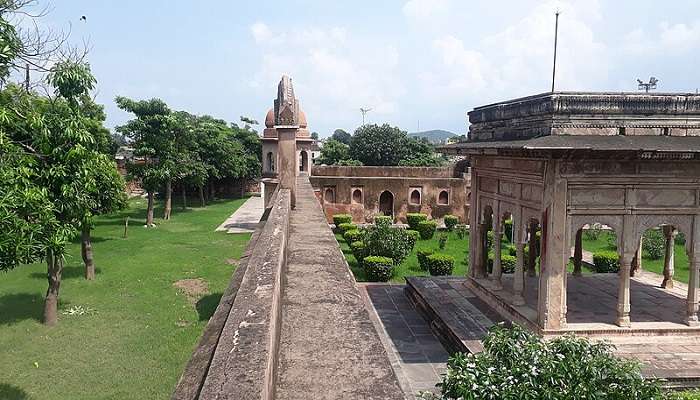
Get a closer look at the cultural tapestry that weaves through the Cenotaph, embodying the ethos and traditions of a generation-long past.
- It symbolizes dignity and ancestry for both the same community and others beyond.
- The cenotaph of Raja Gangadhar Rao is important for its architectural beauty, historical significance, and lasting heritage. It represents the great leader and the Jhansi kingdom’s lasting legacy.
- The cenotaph also mirrors the amalgamation of unique Hindu and Islamic designs during the Jhansi period.
- It is essential to mention that this tomb represents the cultural values and artistic expression of the Jhansi state, which also influenced the history of India in many ways.
Places To Visit Near The Cenotaph Of Raja Gangadhar Rao
Jhansi is rich in history, and visitors to the cenotaph can explore several other historical and cultural sites nearby, making it an ideal destination for those interested in India’s history.
1. Jhansi Fort
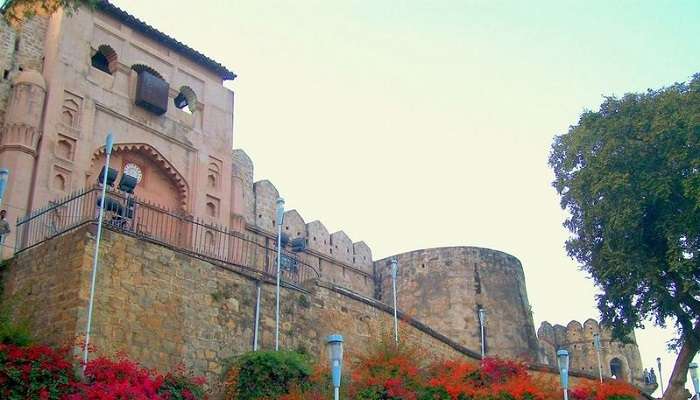
It was built by Raja Bir Singh Ju Deo of the Bundela dynasty in the early 17th century and covers about 15 acres with colossal granite walls of 16-20 feet in thickness. There are ten gates of the fort, prominent among which are the Khanderao Gate and the Laxmi Gate Cannon. Notable attractions include the Kadak Bijli and Bhawani Shankar cannons that were used during the revolt of 1857. Visitors may find temples devoted to Lord Shiva and Lord Ganesha. A house once a royal palace is now a museum that exhibits artefacts about the fort’s past. A famous site where Rani Lakshmibai escaped on horseback during the British attack.
Location: Jhokan Bagh, Jhansi, Uttar Pradesh 284002
Timings: 7 AM to 6 PM
Entry Fee: INR 250
Suggested Read: Rang Mahal Fatehpur Sikri
2. Government Museum Jhansi
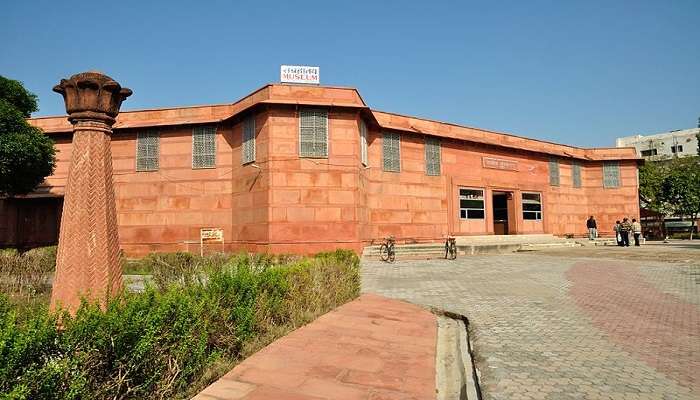
The Government Museum Jhansi, known as Shatabdi Smarak, is an important cultural institution at the centre of Jhansi, Uttar Pradesh. This museum was established in 1878 and contains a vast collection of historical artefacts that any visitors with an interest in the culture of the region should not miss. The museum presents a variety of objects, such as terracotta artefacts pieces, sculptures, coins and weapons in its collections. The ground floor specifically focuses on Rani Lakshmibai, showcasing her belongings and memorabilia. The museum also performs an educational role; hence, visitors can learn about local history, culture and art from the 4th century BC up to the 19th century.
Location: FH3F+C69, Jhokan Bagh, Jhansi, Uttar Pradesh 284002
Timings: 10:30 AM to 4:30 PM
Entry Fee: INR 5
3. Orchha Fort Complex
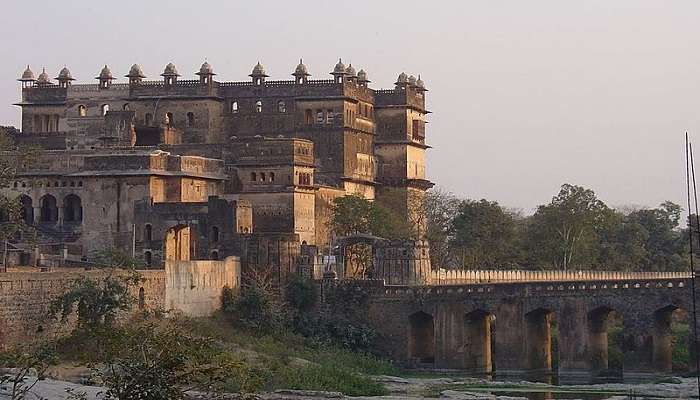
The Orchha Fort Complex was built in the early 16th century on orders from Rudra Pratap Singh, who was the then king, and it became a mixture of Mughal and Rajput designs. Madhukar Shah’s Raja Mahal is a royal residence with original wall paintings. The Mughal Emperor Jahangir’s Jahangir Mahal is an eight-domed Hindu-Mughal palace. It commands an unrivalled view of its surroundings. Sheesh Mahal was the royal residence sandwiched between Raja Mahal and Jahangir Mahal. Elegantly furnished, it has a peaceful atmosphere. Rai Praveen Mahal was meant for Rai Praveen who was a famous poetess, this palace has ornate murals that depict her life and creativity. Phool Bagh is an attractive garden with water fountains and even an underground cooling system constructed by royalty as a respite against extreme heat during the summer months.
Location: Ticket counter, Orchha Fort complex, Orchha, Madhya Pradesh 472246
Timings: 9 AM to 6 PM
Entry Fee: INR 50
Suggested Read: Minto Park
4. Laxmi Talab
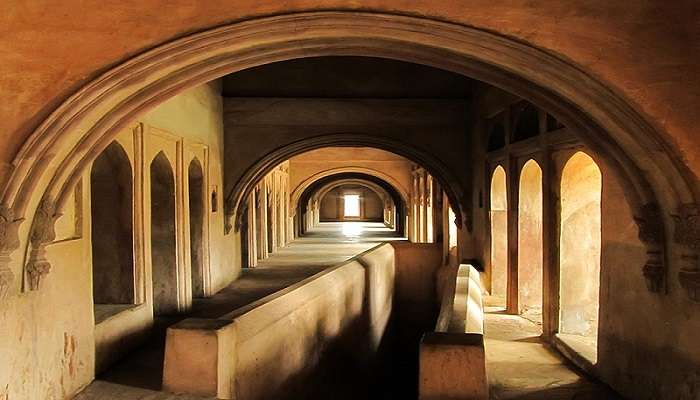
Laxmi Tal, situated in Jhansi, Uttar Pradesh, is a perennially calm but historical and culturally rich lake. Named after the legendary warrior queen Rani Lakshmibai, it is also the converging point of several equally important landmarks, thus becoming a tourist destination inviting several people. The best season to visit Laxmi Tal is winter (October–March) because the weather is pleasant enough for outdoor activities to take place during this period. During festivals, many people come to the lake; hence, it would be wise to schedule your visit.
Location: Shivaji Nagar, Jhansi, Uttar Pradesh 284002
Timings: Open 24 hours
Entry Fee: No entry fee
Further Read: Places To Visit In Uttar Pradesh
Now that you have a list of things to keep in mind for your next vacation to enjoy at the Cenotaph of Raja Gangadhar Rao, make sure you plan your trip to Uttar Pradesh to these fabulous spots accompanied by your loved ones, this experience will be more rewarding as you experience all the fun with them. Don’t miss out on these opportunities, and book your tickets now!
For our editorial codes of conduct and copyright disclaimer, please click here.
Cover Image Credit: Pinakpani for Wikimedia Common
Frequently Asked Questions About the Cenotaph of Raja Gangadhar Rao
What is the Cenotaph of Raja Gangadhar Rao?
he Cenotaph of Raja Gangadhar Rao is a monument dedicated to Maharaja Gangadhar Rao, the ruler of Jhansi and the husband of Rani Lakshmibai.
The Cenotaph of Raja Gangadhar Rao is in which place?
It is located at Jhansi, which is a historical town found in India’s Uttar Pradesh.
Are there other tourist spots near the Cenotaph of Raja Gangadhar Rao ?
In Jhansi, there are other attraction sites including Jhansi Fort, Rani Mahal and the Government Museum. By visiting the above sites, one can appreciate the rich history of the city.
Is the Cenotaph of Raja Gangadhar Rao open for public visitation?
Yes, it is open for public visitation, so people are allowed to come in and learn about its historical context.
Can one take pictures at the Cenotaph of Raja Gangadhar?
It is usually allowed to take pictures at the Cenotaph of Raja Gangadhar and this has remained a popular place for taking photographs of its historical importance and architectural beauty.
People Also Read:
Places to Visit in Burhanpur Places to Visit in Sehore Places to Visit in Khandwa

We all have to begin somewhere. This is where I start and I hope that my writings encourage you to begin. To new beginnings and conquering new places!











